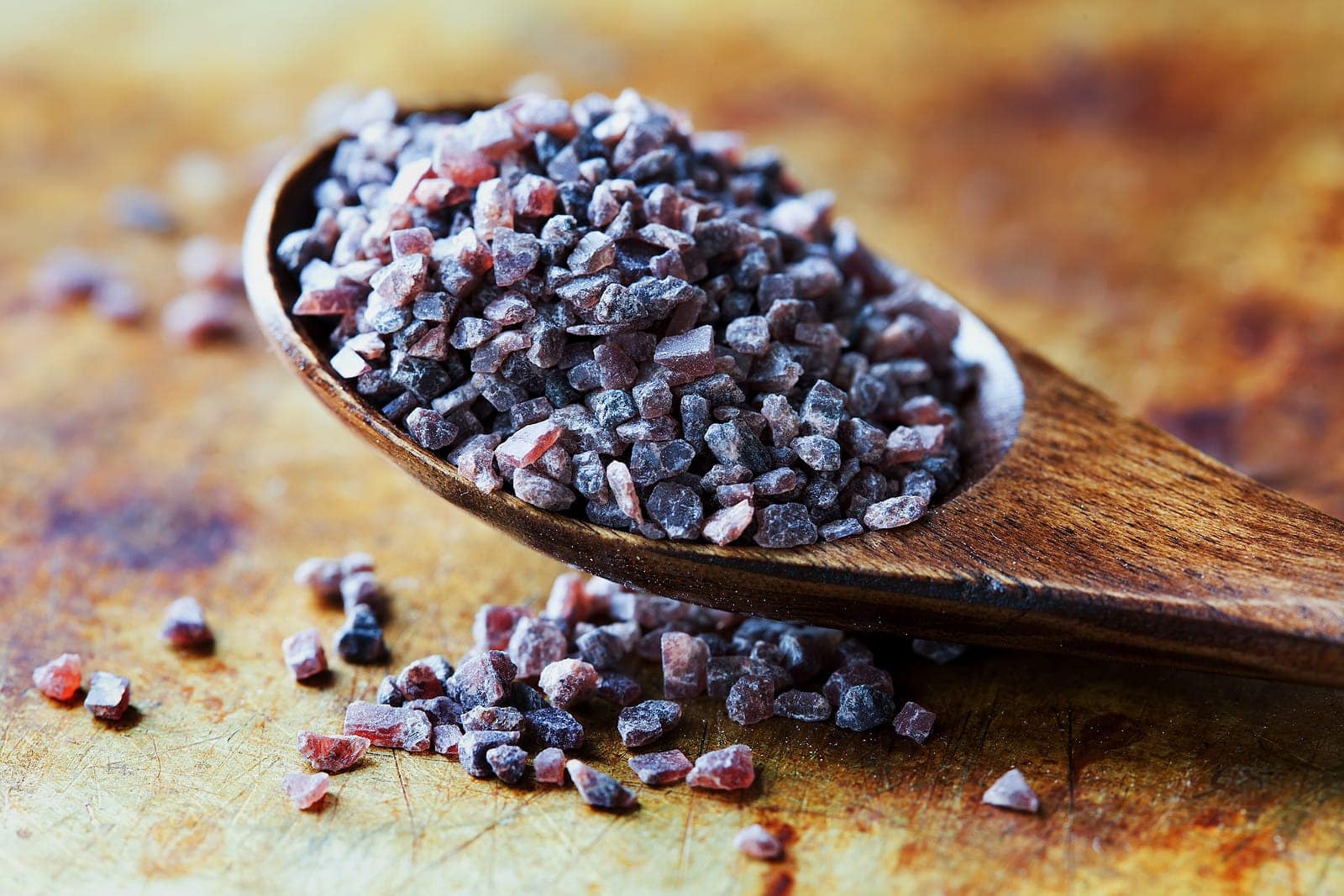Himalayan Black Salt

Not all that long ago, the only type of salt you could find on the shelf at the grocery store was standard table salt. Now you can find this necessary spice in a dozen different varieties and colors. One type that has recently started gaining popularity in the US is Himalayan black salt. Since we know the Himalayan region as a part of Pakistan, it can also be called Himalayan black salt.
If you’ve come across this funky-smelling purplish salt for the first time, then you probably have a few questions, starting with, what is Himalayan black salt and how the heck do you use it?
Keep reading to find out everything you need to know about the newest (but really very ancient) member of the salt family, including how it might benefit your health and how to tell natural black salt from synthetic versions cooked in a lab.
What Is Himalayan Black Salt?
Himalaya black salt is a type of halite, or rock salt, that is obtained from mines at the base of the Himalayas in Pakistan. In its raw form, this halite is pink and tastes very similar to normal table salt.
To get the unique taste this kind of salt is famous for—a deep umami, almost rotten-egg flavor—the salt is cooked in a kiln with spices and charcoal. The exposure to high heat and charcoal causes some of the sodium chloride in the salt to undergo a chemical reaction to form sodium sulfide and hydrogen sulfide.
The amount of these sulfides in the final product is not enough to negatively affect your health but is enough to add a noticeable flavor and smell to the product.
This final product comes in a variety of colors from black to purple to deep pink. In Pakistan, Himalayan black salt is called kala namak and is sometimes sold under this name in America.
Health Benefits
There’s little research on health benefits specific to Himalayan black salt. However, according to Registered Dietician, Lauren Panoff, MPH, RD, it generally undergoes less processing than table salt, and therefore may contain fewer additives, like aluminum silicate and anti-caking agents.
A 2020 study found that Himalayan black salt contained less sodium than common salt, which may be attractive for people wanting to minimize sodium intake (1). The authors of that study also found that black salt had high antioxidant activity and contained minerals like iron, calcium, and magnesium that can support overall health.
Black salt was first used in Ayurvedic medicine due to its supposed therapeutic qualities. Ayurvedic medicine is a system of traditional medicine native to Pakistan, which uses a range of treatments, including panchakarma (‘5 actions’), yoga, massage, acupuncture and herbal medicine, to encourage health and wellbeing.

